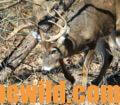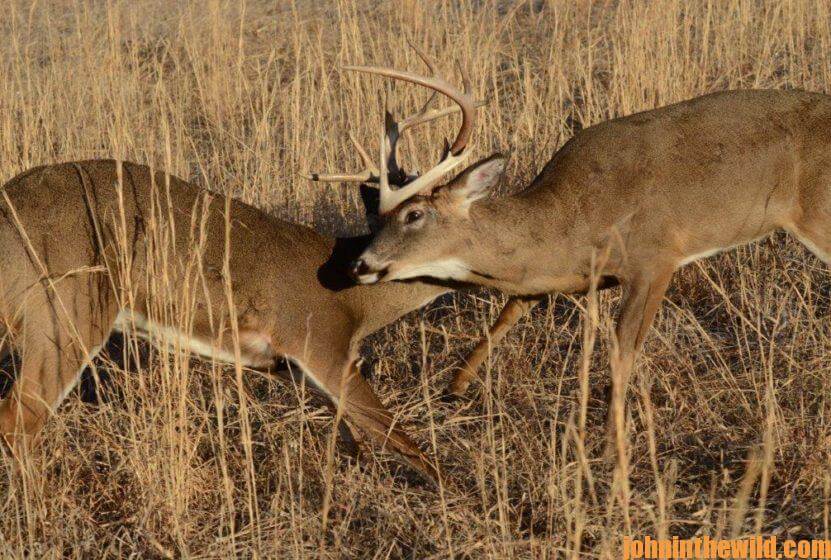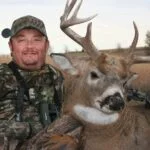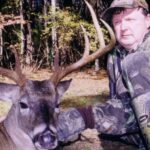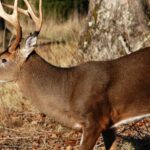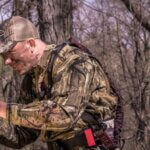Editor’s Note: During the last couple of weeks of deer season, if you haven’t taken your buck, what can you do to insure your success? How can you bag the biggest buck of the season? At this time of the year, the older bucks know more about what you’ll do than you do. To take them, you must do the unexpected.
 Many years ago on a hunt at legendary White Oak Plantation near Tuskegee, Alabama, I found the lodge had divided the land into approximately 500-acre squares for stalking. Each hunter had 500 to 800 acres to stalk in the morning and the same amount of territory to stalk in the afternoon. White Oak had cut a road all the way around each block of timber to allow the hunters to easily walk the roads and look for deer. After my first morning’s hunt, I analyzed where I had spotted most of the deer sign in my assigned square at the very end of the road. I knew hunters and deer both generally used the easiest routes of travel through any terrain. Also they habitually would take the same routes every day at about the same times. I realized I could pattern hunters as easily as I did whitetails, and that a trophy buck would know within 2 days after the opening of deer season where hunters usually entered the woods and preferred to hunt. I determined that most of the deer moved during the morning hours on the back side of the property, and that by the time the hunters arrived there every day, the deer already had fed and gone to their beds.
Many years ago on a hunt at legendary White Oak Plantation near Tuskegee, Alabama, I found the lodge had divided the land into approximately 500-acre squares for stalking. Each hunter had 500 to 800 acres to stalk in the morning and the same amount of territory to stalk in the afternoon. White Oak had cut a road all the way around each block of timber to allow the hunters to easily walk the roads and look for deer. After my first morning’s hunt, I analyzed where I had spotted most of the deer sign in my assigned square at the very end of the road. I knew hunters and deer both generally used the easiest routes of travel through any terrain. Also they habitually would take the same routes every day at about the same times. I realized I could pattern hunters as easily as I did whitetails, and that a trophy buck would know within 2 days after the opening of deer season where hunters usually entered the woods and preferred to hunt. I determined that most of the deer moved during the morning hours on the back side of the property, and that by the time the hunters arrived there every day, the deer already had fed and gone to their beds.
 On the following morning, I asked if I could hunt the same area I had hunted the previous day. But this time I went into the property the opposite way. In the dark, I walked about 1/4-mile to where a clear-cut dropped off the side of a hill into a hardwood creek bottom. Then I left the road and moved about 100-yards down the creek bottom on the edge of the clear-cut. This tactic allowed me to hunt on a part of the property where deer seldom had seen hunters at a time of day when hunters historically didn’t hunt this side of the property.
On the following morning, I asked if I could hunt the same area I had hunted the previous day. But this time I went into the property the opposite way. In the dark, I walked about 1/4-mile to where a clear-cut dropped off the side of a hill into a hardwood creek bottom. Then I left the road and moved about 100-yards down the creek bottom on the edge of the clear-cut. This tactic allowed me to hunt on a part of the property where deer seldom had seen hunters at a time of day when hunters historically didn’t hunt this side of the property.
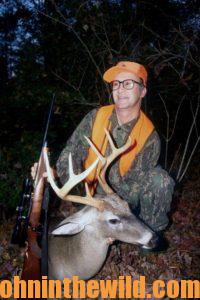 Just at daylight, I watched two 8 points, one spike and two does come out of the clear-cut and begin to feed down the creek. When the deer stood about 50 yards in front of me, the two 8 points started sparring. Once the biggest deer had pushed the other 8 point off his feet, I took the big buck. Probably I wouldn’t have seen any of the deer if I’d gone into the woods and walked the circle as all the other hunters had done all season.
Just at daylight, I watched two 8 points, one spike and two does come out of the clear-cut and begin to feed down the creek. When the deer stood about 50 yards in front of me, the two 8 points started sparring. Once the biggest deer had pushed the other 8 point off his feet, I took the big buck. Probably I wouldn’t have seen any of the deer if I’d gone into the woods and walked the circle as all the other hunters had done all season.
If you hunt at the end of the season, move into the property from a different side than everyone else has during the season. Also hunt the back side of thickets in places where deer never have spotted a hunter before. To survive, the deer must remain in the regions where they seldom encounter hunters. If you’ll frequent those places the last days of the season by hunting backwards, you may find your buck of a lifetime.
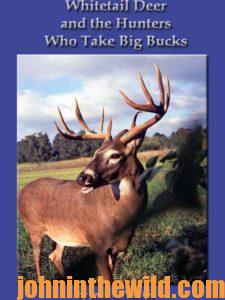 To learn more about hunting deer, check out John E. Phillips’ book, “Whitetail Deer and the Hunters Who Take Big Bucks,” available in Kindle, print versions and Audible at http://amzn.to/2bYwYOK. You may have to copy and paste this link into your browser. (When you click on this book, notice on the left where Amazon says you can read 10% of this book for free and hear 10% for free).
To learn more about hunting deer, check out John E. Phillips’ book, “Whitetail Deer and the Hunters Who Take Big Bucks,” available in Kindle, print versions and Audible at http://amzn.to/2bYwYOK. You may have to copy and paste this link into your browser. (When you click on this book, notice on the left where Amazon says you can read 10% of this book for free and hear 10% for free).
Tomorrow: Putting on Man Drives for Deer in January


